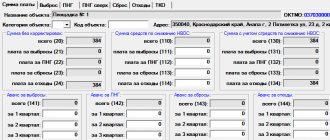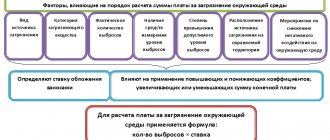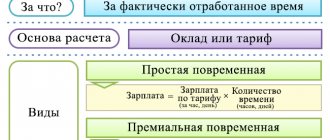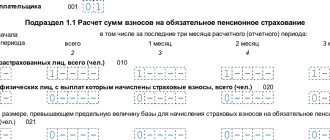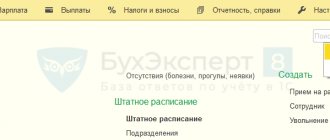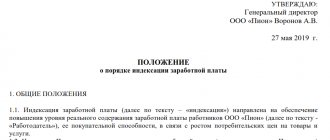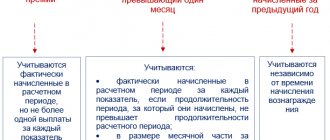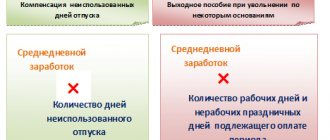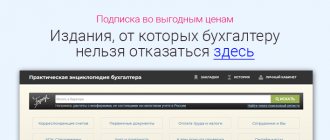Who should pay for negative environmental impacts?
Legal entities and individual entrepreneurs operating on the territory of the Russian Federation, the continental shelf of the Russian Federation and in the exclusive economic zone of the Russian Federation must pay for the negative impact on the environment:
emissions of pollutants into the atmospheric air from stationary sources (hereinafter referred to as emissions of pollutants);
discharges of pollutants into water bodies (hereinafter referred to as discharges of pollutants);
storage, burial of production and consumption waste (waste disposal).
Part 1 of Article 16 of the Federal Law “On Environmental Protection”
Exception: Objects of negative impact on the environment of category 4 (Part 1 of Article 16.1 of the Federal Law “On Environmental Protection”).
Moreover, if a legal entity or individual entrepreneur simultaneously has objects of category IV and objects belonging to other categories defined by law (I, II, III), payment for the negative impact on the environment is calculated and paid for all objects, including objects of IV categories.
<Letter> of Rosprirodnadzor dated January 11, 2019 N AA-06-02-31/370 “On payment for environmental assessment”*
If you generate waste from the MSW group, then in this case your enterprise is not a payer of fees for negative impact on the environment. In this case, the payer is the regional MSW management operator, MSW management operators carrying out disposal activities (Article 16.1 of the Federal Law “On Environmental Protection”).
Who pays the environmental tax
Payers are recognized as all those persons who, in the course of their activities, have an adverse impact on the environment. The number of persons for whom this fee is established includes both legal entities and individuals with the formation of individual entrepreneurs (with the exception of persons engaged in business at objects of category 4, which have a minimal negative impact). A category is assigned to an object when it is registered as a source of harmful influence.
The obligation to pay arises for absolutely all persons associated with environmental management and having a negative impact on nature. It does not matter what tax regime the company operates under.
Negative impact, the presence of which requires payment of a fee, means:
- Harmful emissions into the air;
- Polluting discharges into water;
- Disposal of industrial waste if it has a harmful effect.
The functions of collecting and monitoring payments fall on Rosprirodnadzor; previously this was handled by Rostechnadzor.
The payer of the “environmental tax” must register an object whose influence has a detrimental effect on the environment.
How is the fee for negative environmental impact calculated?
Payment for negative impact on the environment is calculated based on the actual amount of emitted pollutants, discharged pollutants, disposed waste (Article 16.2 of the Federal Law “On Environmental Protection”) for the reporting period.
- Emissions of pollutants are taken into account for each operated source during the reporting period, according to the emissions logbook.
- Discharges of pollutants - according to the wastewater quality logbook. I would like to draw your attention to the fact that if the discharge occurs into centralized wastewater systems, then the payment is made by the organization receiving the wastewater from your enterprise. And you are already paying this organization its expenses.
- Placed waste - according to the waste logbook. Payment is not made for waste accumulated at the enterprise, for waste transferred for recycling or neutralization.
When calculating the negative impact fee, you must take into account the available permitting documentation:
- within the limits of emissions, discharges and above;
- within the limits of temporarily permitted emissions, discharges and above;
- within the limits for the disposal of production and consumption waste and above.
What is subject to environmental fees?
You need to pay for stationary objects that negatively affect the surrounding nature.
Stationary objects include enterprises located on the ground and inextricably linked with it, making emissions into the air and discharges into water. This also includes structures intended for storage, disposal of industrial and consumer waste, and various types of storage facilities. If such waste disposal facilities do not have a negative impact on natural objects, then environmental fees are not paid from them. In this case, the results of environmental monitoring must be available, indicating the impact of these structures on its condition.
Enterprises must pay for harmful effects separately for each stationary facility at its territorial location.
Excessive environmental pollution
Above-limit environmental pollution is a familiar term in everyday life, meaning exceeding standards and limits.
Permits for the emission of pollutants into the atmospheric air, limits for the emissions of pollutants, permits for the discharge of pollutants into the environment, limits for the discharge of pollutants, waste generation standards and limits for their disposal (hereinafter referred to as permits and documents) obtained by legal entities and individual entrepreneurs carrying out economic and (or) other activities at facilities that have a negative impact on the environment and are classified, in accordance with the Federal Law of January 10, 2002 N 7-FZ “On Environmental Protection,” as objects of categories I and II, up to January 1, 2022, are valid until the day of expiration of such permits and documents or until the day of receipt of a comprehensive environmental permit or submission of an environmental impact statement during the validity period of such permits and documents.
Article 11 of the Federal Law of July 21, 2014 N 219-FZ “On Amendments to the Federal Law “On Environmental Protection” and Certain Legislative Acts of the Russian Federation”
In essence, this provision of the law, after receiving a comprehensive environmental permit or declaration of environmental impact for ENVOS categories 1, 2, these documents are permits.
At facilities of categories I and II, until comprehensive environmental permits are obtained and an environmental impact declaration is submitted, temporarily permitted emissions/discharges are recognized as limits on emissions/discharges
Article 11 of the Federal Law of July 21, 2014 N 219-FZ “On Amendments to the Federal Law “On Environmental Protection” and Certain Legislative Acts of the Russian Federation”
Explanations for ENVOS category 3 - what I found:
With regard to emissions of pollutants, with the exception of radioactive ones, for objects of category III in accordance with Article 22 of the Federal Law of January 10, 2002 N 7-FZ “On Environmental Protection”, it is necessary to calculate the standards of permissible emissions for highly toxic substances, substances that are carcinogenic, mutagenic properties (substances of hazard class I, II). If it is impossible to comply with the standards for permissible emissions of such substances, an environmental protection action plan is developed and temporarily permitted emissions are established (Article 23.1 of Law No. 7-FZ).
Letter of the Ministry of Natural Resources of Russia dated September 20, 2019 N 12-47/22755 “On the implementation of industrial environmental control in the field of atmospheric air protection”
When calculating fees for the negative impact on the environment by legal entities and individual entrepreneurs carrying out economic and (or) other activities at category III facilities , the volume or mass of emissions of pollutants, discharges of pollutants, indicated in the report on the organization and on the results of the implementation of industrial environmental control are recognized as being carried out within the limits of permissible emissions standards, permissible discharge standards, with the exception of radioactive substances, highly toxic substances, substances with carcinogenic, mutagenic properties (substances of hazard class I, II).
Federal Law of July 21, 2014 N 219-FZ 19) “On Amendments to the Federal Law “On Environmental Protection” and Certain Legislative Acts of the Russian Federation” (as amended and supplemented, entered into force on January 1, 2020)
It turns out that for category 3 ENVOS the following rule applies:
- The amount of emissions and discharges of pollutants shown in the PEC report (with the exception of substances of hazard classes 1 and 2) is recognized as an amount within the limits of the standards.
- For substances of hazard classes 1 and 2, ENVOS of category 3 have calculations of standards; therefore, for these substances, excesses of standards are established based on these calculations.
Waste generation standards and limits on their disposal
According to paragraph 3 of Article 18 of Law No. 89-FZ, individual entrepreneurs and organizations whose economic and other activities generate waste ( with the exception of small and medium-sized businesses ):
- should develop draft standards for waste generation and limits on their disposal.
The procedure for developing and approving standards for waste generation and limits for their disposal was approved by the Order of the Ministry of Natural Resources of the Russian Federation dated February 25, 2010.
No. 50. Waste generation standards and limits on their disposal are approved for a period of 5 years* in the form of a technical report, developed in accordance with the methodological instructions specified in paragraph 4 of the Procedure, and submitted in a notification manner to the territorial bodies of Rosprirodnadzor, which have approved waste generation standards and limits on their placement.
*Subject to annual confirmation by individual entrepreneurs and legal entities of the unchanged production process and raw materials used.
The technical report must be submitted to the relevant territorial body of Rosprirodnadzor within ten working days from the expiration of the next year from the date of approval of the Limits (Letter of Rosprirodnadzor dated May 17, 2011 No. KT-08-03-36/6068).
Small and medium-sized businesses, whose economic and other activities generate waste, submit reports to Rosprirodnadzor on the generation, use, disposal, and disposal of waste in accordance with the notification procedure .
Accordingly, individual entrepreneurs and organizations - small and medium-sized businesses do not need to develop draft standards for waste generation and limits on their disposal, but only need to submit a report in accordance with the Order of the Ministry of Natural Resources of the Russian Federation dated February 16, 2010. No. 30.
The Procedure for submitting and monitoring reporting on the generation, use, neutralization and disposal of waste (with the exception of statistical reporting) approved by this Order is intended to:
- for legal entities and individual entrepreneurs as a result of economic and other activities which generate waste and which, in accordance with the Federal Law of July 24, 2007. No. 209-FZ “On the development of small and medium-sized businesses in the Russian Federation” refers to small and medium-sized businesses,
- and for territorial bodies of Rosprirodnadzor.
At the same time, according to the Letter of Rostekhnadzor dated June 22, 2010.
No. 00-07-12/3116 “On reporting of small and medium-sized businesses”:
“...payment for waste disposal within the limits presented in the reporting will be calculated as for waste disposal within the limits .”
Accordingly, for individual entrepreneurs and organizations of small and medium-sized businesses, the limits on waste disposal will be:
- the amount of waste actually sent for disposal in accordance with reporting on the generation, use, neutralization, and disposal of waste.
Such reporting must be submitted before January 15 (i.e. January 14 is the last day of submission) of the year following the reporting period*.
*The reporting period is one calendar year.
The reporting is prepared on paper in two copies , one of which is kept by the reporting small and medium-sized enterprise, and the second, together with the electronic version of the Reporting on magnetic media, is submitted to the relevant territorial body of Rosprirodnadzor.
Reporting is compiled on the basis of primary accounting data of waste generated, used, neutralized, transferred to other legal entities and individual entrepreneurs, received from other legal entities and individual entrepreneurs or individuals, as well as disposed waste.
Reporting includes:
1) general information about the reporting small and medium-sized enterprise;
2) the balance of the masses of waste generated, used, neutralized, transferred to other legal entities and individual entrepreneurs, received from other legal entities and individual entrepreneurs or individuals, disposed of waste during the reporting period;
3) information about legal entities and individual entrepreneurs to whom waste was transferred during the reporting period;
4) applications.
General information includes:
a) for legal entities:
- full and abbreviated name, including company name,
- organizational and legal form of a legal entity,
- its location,
- state registration number of the entry on the creation of a legal entity and data from the document confirming the fact of making an entry about the legal entity in the Unified State Register of Legal Entities;
- telephone, fax, e-mail;
- location code according to the All-Russian Classifier of Objects of Administrative-Territorial Division (OKATO);
b) for individual entrepreneurs:
- last name, first name and patronymic (the latter - if available),
- location,
- details of the identity document, state registration number of the record of state registration as an individual entrepreneur and details of the document confirming the fact of making an entry about the individual entrepreneur in the Unified State Register of Individual Entrepreneurs;
- telephone, fax, e-mail;
- code of place of residence according to the All-Russian Classifier of Objects of Administrative-Territorial Division (OKATO).
The reporting can be submitted in person, or it can be sent to the address of Rosprirodnadzor by post with a list of the contents and a receipt.
The date of submission of the Report is considered to be the mark of the territorial body of Rosprirodnadzor on its receipt indicating the date or the date of mailing.
Payment for negative impact on the environment - terms
The fee for negative impact on the environment, calculated based on the results of the reporting period, taking into account the adjustment of its amount, is paid no later than March 1 of the year following the reporting period.
Art. 16.4 Federal Law “On Environmental Protection”
Wherein:
- Quarterly advance payments are made no later than the 20th day of the month following the reporting quarter.
- For the 4th quarter, advance payments are not made - the already adjusted annual fee minus 3 quarters is paid.
- Small and medium-sized businesses do not make quarterly advance payments.
Persons obligated to pay a fee have the right to choose one of the following methods for determining the amount of the quarterly advance payment for each type of negative environmental impact for which a fee is charged:
1) in the amount of one-fourth of the amount of the fee for negative environmental impact payable for the previous year - the simplest option ;
2) in the amount of one-fourth of the amount of payment for negative impact on the environment, in the calculation of which the payment base is determined based on the volume or mass of emissions of pollutants, discharges of pollutants within the limits of permissible emission standards, permissible discharge standards, temporarily permitted emissions, temporarily permitted discharges, limits on disposal of production and consumption waste;
3) in the amount determined by multiplying the payment base, which is determined on the basis of industrial environmental control data on the volume or weight of emissions of pollutants, discharges of pollutants, or the volume or weight of industrial and consumption waste disposed in the previous quarter of the current reporting period, by corresponding rates of payment for negative impact on the environment using the coefficients established by Article 16.3 of this Federal Law.
The deadline for submitting a declaration on payment for negative environmental impact is no later than March 10 of the year.
Terms of payment of environmental payment
When paying the environmental fee, you need to be guided by the Letter of Rosprirodnadzor dated April 11, 2016 No. AC-06-01-36/6155/.
According to the said Letter, the reporting period is recognized as a year. The timing and mechanism of payment depends on the type of payer:
- small and medium-sized enterprises make payments once a year at the end of this period until March 1;
- other enterprises are required to make quarterly advance payments in the amount of one-fourth of the same payment for the previous year by the 20th day of the next month. At the end of the year, the missing amount of the fee is paid.
These rules are in effect from January 1. 2016
For 2016 you must pay the environmental fee before March 1, 2022. Enterprises, with the exception of small and medium-sized ones, during 2016. must make 3 payments in equal installments in the amount of ¼ of the total actual payment for 2015. However, this amount does not need to include amounts paid in 2015 to cover the debt for previous years.
If the company was created in 2016, then advance payments are not made; until March 1, 2022, such companies will need to make payments in full for the past year.
You need to pay at the location of the stationary source of harmful influence.
Example of payment calculation in 2016
The company disposes of municipal solid waste. For 2015, the amount of the fee for harmful effects was transferred in the amount of 2,000 rubles. (excluding additional charges for previous years).
In 2016, the following payments must be made:
- 500 rub. – until March 21;
- 500 rub. – until July 20;
- 500 rub. – until October 20;
- The payment amount calculated for the year minus advances paid (RUB 1,500) – until March 1, 2022.
Non-regulated substances and fees
Do I need to include and pay for emissions that are not subject to regulation?
My opinion:
Let's look at the legislation:
When determining the payment base, the volume and (or) mass of emissions of pollutants, discharges of pollutants within the limits of permissible emission standards, permissible discharge standards , temporarily permitted emissions, temporarily permitted discharges exceeding such standards , emissions and discharges (including emergency), technological standards are taken into account. , and also takes into account limits on the disposal of production and consumption waste and their exceeding.
paragraph 4 of article 16.2 of the Federal Law of January 10, 2002 N 7-FZ (as amended on December 27, 2019) “On Environmental Protection”
Standards for emissions of harmful (pollutant) substances into the atmospheric air are determined in relation to harmful (pollutant) substances included in the list of pollutants in respect of which state regulatory measures in the field of environmental protection are applied, approved by Decree of the Government of the Russian Federation dated July 8, 2015 No. 1316-r.
paragraph 5 of the Decree of the Government of the Russian Federation dated March 2, 2000 N 183 (as amended on July 14, 2017) “On standards for emissions of harmful (pollutant) substances into the atmospheric air and harmful physical effects on it.”
Rates of payment for negative impact on the environment are established for emissions of pollutants, discharges of pollutants in relation to each pollutant included in the list of pollutants, as well as for the disposal of industrial and consumer waste according to their hazard class.
As of today, the current Resolution on payment rates is:
GOVERNMENT OF THE RUSSIAN FEDERATION DECISION No. 913 of September 13, 2016 “ON FEE RATES FOR NEGATIVE ENVIRONMENTAL IMPACT AND ADDITIONAL RATIOS.”
Thus: the payment base is formed from emissions within the limits of the maximum permissible limit, the maximum limit and the excess limit. At the same time, permissible emission standards are established in relation to substances from the list, payment rates are also established in relation to substances from the list, therefore, we conclude that the payment must be calculated in relation to substances from the list.
If the question concerned solid particles classified as suspended (abrasive dust, soot, iron oxide), then there are clarifications:
LETTER dated January 16, 2022 No. AS-03-01-31/502
ABOUT CONSIDERATION OF THE APPLICATION
Federal Service for Supervision of Natural Resources on the issue of standardization of emissions of harmful (pollutant) substances in accordance with Order of the Government of the Russian Federation dated 07/08/2015 N 1316-r (hereinafter referred to as Order N 1316-r) in addition to the letter dated 10/07/2016 N OD -08-02-31/20716 reports the following. By Order No. 1316-r in accordance with clause 2 of Art. 4.1 of the Federal Law of January 10, 2002 N 7-FZ “On Environmental Protection” approved a closed list of pollutants for which state regulatory measures in the field of environmental protection are applied (hereinafter referred to as the List), In Section I “For Atmospheric Air” of the List the item “suspended substances” is included. Emissions of substances that, by their physical properties, belong to solid particles, are present in the List and are individually named and standardized individually (separately for each of these substances). According to the Russian Ministry of Natural Resources, all other substances related to solid particles in their physical properties should be taken into account in emissions as “suspended substances .” We also inform you that approved by Decree of the Government of the Russian Federation of September 13, 2016 N 913 “On rates of payment for negative impact on the environment and additional coefficients" payment rates for emissions of pollutants into the air from stationary sources (hereinafter referred to as payment rates) contain the item "suspended substances". According to the Russian Ministry of Natural Resources, emissions of substances such as abrasive dust, carbon (soot), Iron oxide, due to its physical properties related to solid particles, should be taken into account in the composition of emissions as suspended substances. The classification of these substances as suspended substances in paragraphs 10, 11 and 12 of the List of pollutants subject to state regulatory measures in the field of environmental protection, approved by Order N 1316-r, must be carried out in accordance with the size of their solid particles. Accordingly, the fee for emissions of the above substances should be calculated based on the fee rate for suspended substances.
Results
In 2022, a levy for damage caused to the environment will be introduced in Russia. There are no changes in the procedure for calculating payments and the timing of their introduction into the budget. The form of the calculation being created and the methods for submitting it to Rosprirodnadzor have also been preserved.
Sources:
- Federal Law of January 10, 2002 No. 7-FZ
- Federal Law of June 24, 1998 No. 89-FZ
- Decree of the Government of the Russian Federation dated March 3, 2017 No. 255
- Decree of the Government of the Russian Federation of September 13, 2016 No. 913
You can find more complete information on the topic in ConsultantPlus. Free trial access to the system for 2 days.
Features of calculating the fee for non-vegetable taxation
The procedure for calculating the environmental fee is determined by Article 16.3 of Law No. 7-FZ as amended. from 07/03/16.
Payers independently calculate the amount of payment by multiplying the payment base by the rate, taking into account the coefficients prescribed in the specified article. Environmental control information is used in the calculations.
The base is one of the following values:
- The volume of substances released or released into the environment;
- The mass of waste disposed at the relevant facilities.
The payer’s task is to determine the volume of emissions, discharges or mass of waste. You can do this yourself or use the help of specialized organizations.
The calculation is carried out separately for each hazardous substance included in the corresponding list and for each waste hazard class.
Each type of substance or waste has its own rate, the amount of which is determined by the Russian government. In addition, for specially protected areas there are additional coefficients, which are also established by the Government of the Russian Federation.
Clauses 5 and 6 of Article 16.3 determine the coefficients that must be taken into account when calculating the payment. These coefficients are aimed at stimulating payers to reduce harmful effects.
The Government of the Russian Federation has established standards for payment for emissions, discharges and waste. These standards were approved by Resolution No. 344 of June 12, 2003. The appendix to the resolution includes coefficients that take into account various environmental factors of the region, air and water conditions at the location of the facility.
Since the standards were established back in 2003, an additional coefficient must be taken into account when calculating the fee for NVOS. In 2016 its value is 2.56, in 2022 – 2.67. In 2005, Resolution 344 was amended by Resolution No. 410.
You can find out your negative impact standard through Rosprirodnadzor. To do this, you should inform about the type of your activity and the products you manufacture. Based on such data, Rosprirodnadzor will determine approximate standards for the payer, based on which the “environmental fee” should be calculated.
When calculating the base, the following pollution values are taken into account:
- Acceptable standards;
- Temporarily permitted standards;
- Limits and their exceeding.
Depending on the amount of actual pollution, the collection is calculated by multiplying emissions (discharges) by the appropriate rate established for standard, limit and above-limit pollution, after which the resulting indicators are summed up. When calculating, you need to take into account all the required coefficients (from clause 3, 6 of Article 16.3 of Law No. 7-FZ, from clause 2 and appendix 2 to Resolution 344, from Resolution 410).
The cost of implementing measures aimed at neutralizing and reducing the negative impact on nature is deducted from the payment amount. These costs must be documented.
KBK for payment of the fee in 2016
When filling out payment documentation for making an environmental payment, you must use the following BCCs:
| Payment type | KBK |
| Harmful emissions into the atmosphere caused by stationary objects | 04811201010016000120 |
| Polluting discharges into water | 04811201030016000120 |
| Waste disposal | 04811201040016000120 |
In each separate payment, only one BCC is indicated. Details for the transfer can be found on the official website of Rosprirodnadzor.
Responsibility for non-payment of environmental tax
From the beginning of January, payers may be subject to liability in the form of late fees - 1/300 of the refinancing rate. This amount is calculated for each day of non-payment. The rate is taken at the time of payment of penalties and is limited to a maximum value of 0.2% for each day.
Penalties must be accrued from March 2 of the following year, since on March 1 the deadline for paying the “environmental fee” expires, and from the next day the payer becomes liable.
In addition to the accrual of penalties, the defaulter also faces administrative liability in the form of a fine ranging from 3 to 6 thousand rubles. for officials and from 50 to 100 thousand for legal entities.
